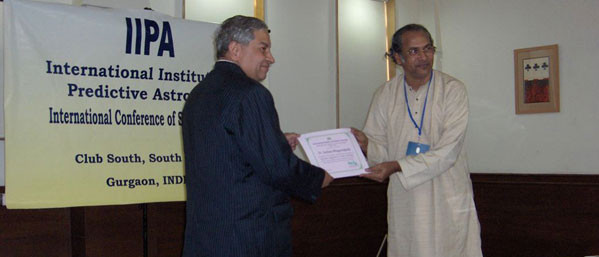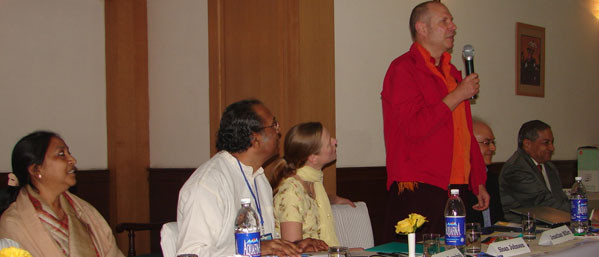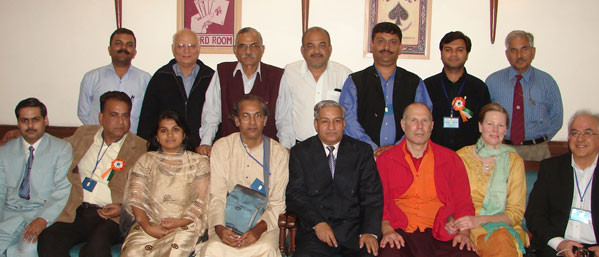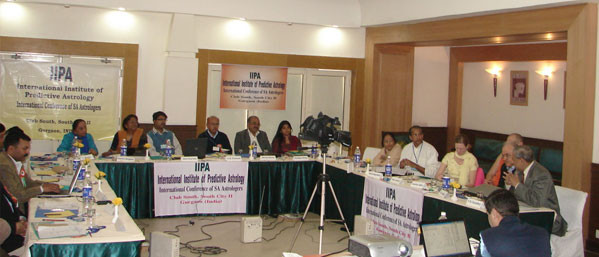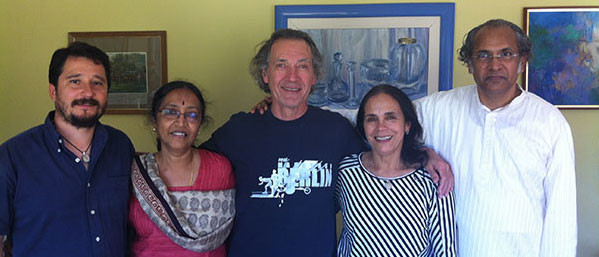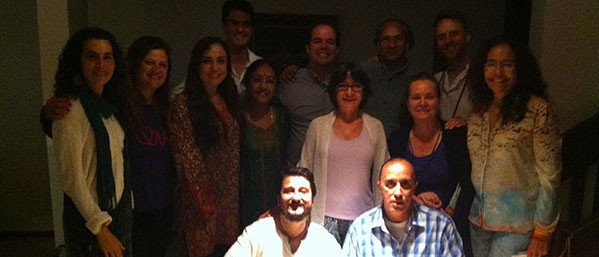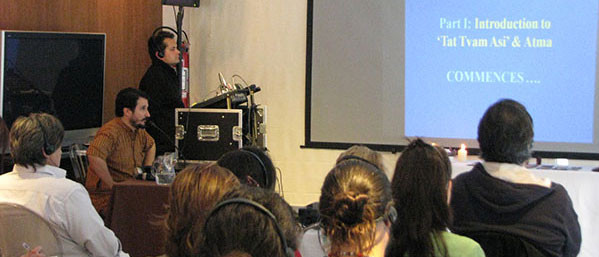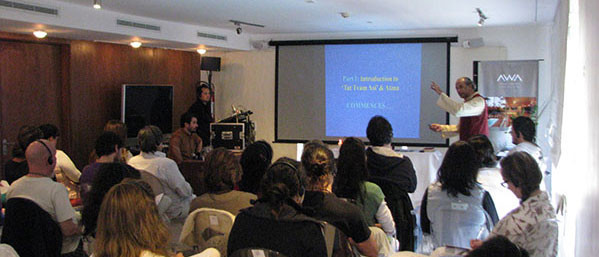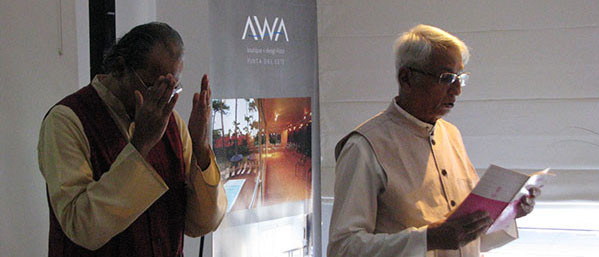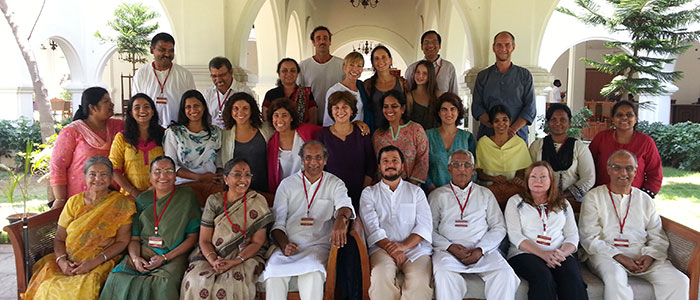I.1.The Ultimate Spiritual Goal of the Hindus:
Self-knowing is atmajnana. Put simply, Atma is the imperceptible inner self and jnana is profound understanding of our true self, as the imperceptible inner Self. This profound understanding, which is actually wisdom, is also referred to as realization. The mature form of this self-knowing is self-realization or moksha, which has always been & still continues to be the ultimate esoteric goal in the spiritual life of the Hindus.
Paradoxically, however, it is also the subtlest non-goal in the sense that those actually reaching that goal will have an inherent difficulty in perceiving their attainment of this goal, to be in the nature of a personal achievement. This situation is wholly different from our pursuit of all other goals in the spheres of artha & kama, for in these mundane spheres, the reaching of the goal, invariably would tantamount to some enrichment for the individual self, whereas in self-realization, there is implied a loss of the illusion of the individual self.
Another peculiar fact is that this goal cannot be reached by the conventional means of seeking, for it is this very seeking which will act like a hindrance and prevent the reaching of the goal. For these reasons, it may be considered to be a subtle non-goal.
Therefore, even serious spiritual seekers who have been conscientiously walking on the road of a traditional spiritual life (dharma) will initially find it hard to have a clear understanding of what it is and what it is not. Not only that, they may even possibly have some strange fear of the unknown moksha & a consequent erroneous understanding born of that fear.
To dispel such misunderstanding, it will be proper for us to approach the old problem of atmajnana & moksha anew, through a comprehensive understanding based on the assimilation of the various essential principles from traditional sacred texts, as well as from the teachings of many modern self-realized masters. Such a broad new understanding will moreover have the merit of being free of the taint of a narrowly circumscribed framework. A taint that usually arises, when an approach is confined exclusively to one school of philosophic thought, or limited by its insularity & allegiance to the teachings of only a single self-realized master.
After all, we have got to bear in mind that in nature’s ever expansive way, different masters have always been manifesting on the stage of the world, for throwing light on specific aspects of moksha, for the benefit of specific kinds of seekers of moksha(called mumukshus) – only because in the course of an entire lifetime, a single master is usually able to throw into full relief, no more than one or two specific aspects of these esoteric teachings.
I.2.What is the Ground from which this Ultimate Goal Springs?
From very ancient times, because of man’s never-ending mental conflicts and confusions, he has always sought an everlasting peace & understanding as a panacea for all his ills. A profound understanding that will at once put an end to all his travails and miseries; an ever-lasting peace that will annihilate his painful sense of separation from all life, animate, as well as inanimate.
Such an ultimate spiritual goal need not baffle us unduly. If we were to go by our long religious history, we may go so far as to say that this is something for which man could well have been even genetically programmed. It is a culminating milestone in his biological-physical-mental evolution that he is fated to cross, just as the entire species was genetically programmed to get beyond the well-known rudimentary milestone of puberty and sexual awakening. After all, historical recordings of this ultimate esoteric quest, which constitute an integral part of the religious and spiritual traditions of the various peoples of the earth, do exist and they offer us substantial testimony that this too is very much a part of man’s evolutionary destiny, even though, in the present ‘season’(yuga) of our human civilization, it may appear to be somewhat of an esoteric nature.
The Hindus and later Buddhists & even the Jains, developed an obsession with this ultimate esoteric goal, as it appears to have held an irresistible fascination for their innate spiritual appetites, and these appetites in turn are probably rooted in the peculiar geographical positioning of the Indian sub-continent.
I.3. Liberation from all Tyrannies in Consciousness is Moksha:
They called this ultimate spiritual goal of man, moksha.Though it meant an all-pervasive liberation; initially at least it invariably manifested as a palpable freedom from every kind of tyranny in consciousness, a tyranny perpetrated by the notorious gang of demons or asuras, as they are called in Hindu mythologies. Of course, these have been well-identified in the scriptures for thousands of years and represent the cosmic malevolent life energies, which anyhow have no option but to coexist, side by side, with the cosmic benevolent life energies, which have also been identified as the godly devas in ancient mythologies.
Moksha in the next stage also ought to mean freedom from every kind of suffering that every demonic tyranny inevitably created. The tyrannies perpetrated by the asuras, invariably resulted in every kind of painful and undesirable negative manifestations in consciousness; namely, conflict & emotional confusion; fragmentation of consciousness; dissipative wallowing in the experiences of the past or incessant day dreaming into make believe futures; anger, utter insensitivity & violence; lust, greed, jealousy, hatred, cruelty, enmity & every kind of perversity, etc.
The end result was a very debilitating condition in consciousness bereft of all vitality, with an almost continuous distortion in perception, to such an extent that sorrow, which was created by these illusions, becomes a tragic way of life for the species as a whole. Maya is the Hindu name given to these illusions or false perceptions in consciousness.
The first important stride in the spiritual life ought to concern itself with the patient observation, study and understanding of the perpetually ongoing conflict between the devas & asuras in our consciousness. The second stride ought to consist of becoming intimate with the demonic energies, the asuras, and then going on to pacify them, so that, they become deflated by our very non-judgmental observation of their activities, and become rested and peaceful in this process. This again is another important stage in-moksha.
The mature form of moksha was found to be possible, only when man discovered his true Self or true nature-which was neither the body, nor his ego, nor even his consciousness, nor his learning, nor his capacities, but something entirely different, more in the nature of a sovereign Divinity, that was imperceptible and hidden away and yet ruled the totality of man’s life and the whole of creation.
I.4. Tat Tvam Asi. Inward Discovery of the True Self is Atmajnana:
The Upanishadic aphorism: Tat Tvam Asi, means that if you could but tear asunder all the mayaic illusions, you would find that you are indeed one with that universal spirit, that sovereign Divinity. That is, Tat stands for that sovereign Divinity, Tvam stands for you, and Asi, stands for are. For the Hindus, such an understanding and realization as to who we actually are, namely, the imperceptible inner Self, the Atma, has been the ultimate esoteric goal in their spiritual spheres of life, called, dharma & moksha.
The seemingly impossible inward discovery or astounding irrevocable understanding, or realization, that the true nature of our Self, which is represented in our languages by the first personal pronoun I; is the imperceptible inner Self or Atma, is atmajnana or self-realization. Jnana, becomes irrevocable understanding or realization.






